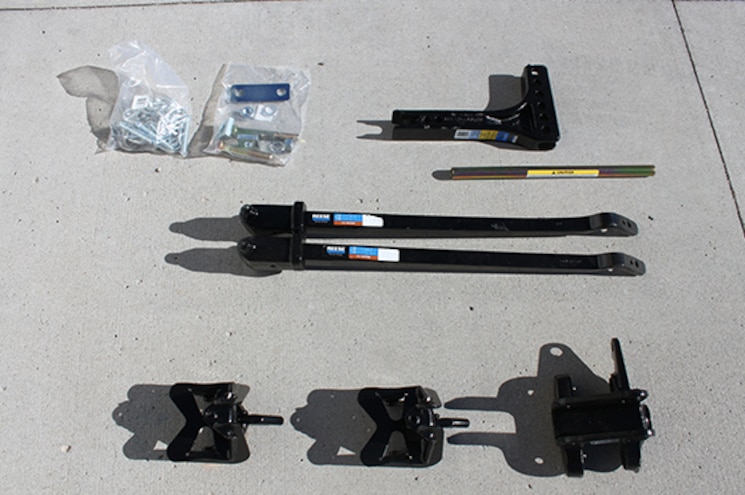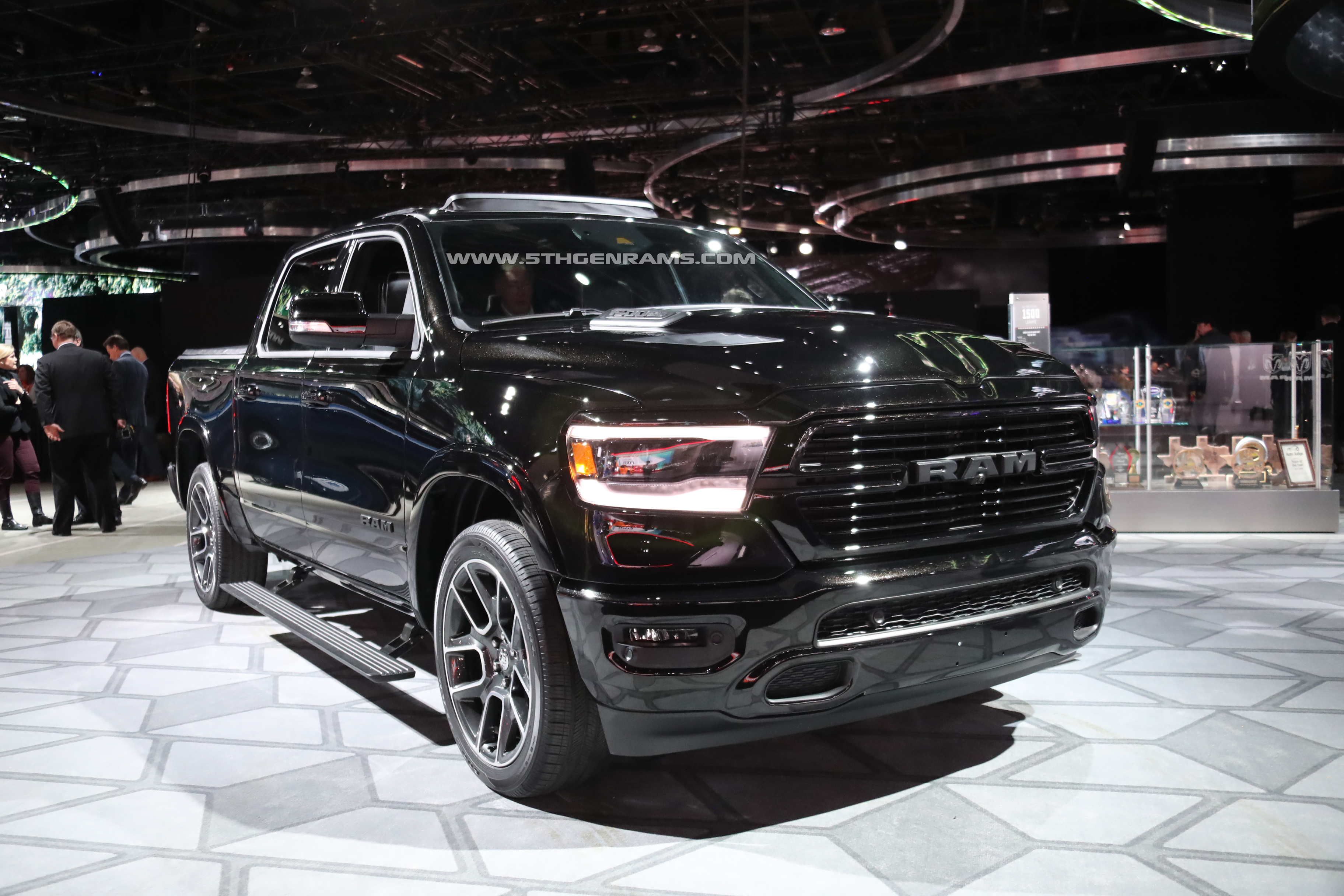All mechanical structures have a safety factor built in. It is advisable to not exceed the rated limits but the structure can typically handle more. A truck frame and axles/suspension aren't like a fuse where something blows at exactly the limit. The truck is rated to haul/tow the rated limits at least through the warranty period, and hopefully much longer. Longevity of bearings and suspension linkage are likely components to fail early if overloaded.
The other concern is braking and handling. An abrupt stop on an overloaded truck puts tremendous strain on the brakes and, if anti-lock kicks in, the modulation creates very high line pressures from the pulsating hydraulics. I blew out my anti-lock controller on a Blazer S10 towing an 18 ft. flatbed with a Ford 4000 tractor on it. That's an example of towing too heavy. Don't do it. I was lucky the breaks didn't fail altogether!
The new tow standards, J something or other number that have been adopted my most manufacturers, now make the playing field more level as far as claims of towing and payload. Used to be that you never really knew how to properly calculate the payload, was there driver, 150%?, fuel? Etc
pickuptrucks.com offeres a slightly dated article from Jan 2018, for the coming 2019 RAM 1500’s. While a bit old, it provides info that may help clear up the waters as far as what the claimed payloads and tow ratings are based on. Note, I cut out some “fluff” to reduce the size of the copied arrticle:
Begin quote:
“We've learned a lot about the all-new 2019 Ram 1500 at the
2018 North American International Auto Show in Detroit, and now we're taking a closer look at its payload and towing numbers.
There have been some interesting upgrades made to the new truck that should help make it a better/stronger tow vehicle, such as the new, stiffer frame, upgraded axles and even the extra power the
eTorque mild-hybrid system offers.
We like the fact Ram is offering a special thermal heating system for the rear axle (only offered on two-wheel-drive models for now) because it not only warms up the rear axle gear lube, it could also be used to take heat away from an overworked rear axle. The system uses warm engine coolant to heat the axle, so why not use that same coolant to dissipate heat, too? Right now, the system is only offered on the smaller (9.25 inches) non-tow-package axle. We're hoping that will change. The max tow 10-inch rear axle (called a Dana Super 60 center section) would be impressive with the segment's first active rear axle cooling technology.
Regarding the Ram's Max Tow Package, it's worth noting it will have one of the biggest ring gears in the class. Upgraded with a 35-spline set of rear axle shafts, it will run 3.92:1 gears and have a max towing rating of 12,750 pounds. We're guessing that number is likely to go up when the all-new Ram 1500 regular cabs get onto the new platform.
Ram will offer three
axle ratio choices: 3.21:1, 3.55:1 and 3.92:1. The last one is packaged with the Max Tow Package and it's the gear set attached to the configuration with the highest gross combined weight rating of 18,200 pounds; as a consequence, the largest max trailing weight listed is
12,750 pounds. To get those capacities, you need a 4x2 Quad Cab with the 5.7-liter V-8 Hemi with the eTorque mild-hybrid system and a gross vehicle weight rating of 6,900 pounds.
The vehicle combination with the
most payload capacity, according to Ram's tow chart, is also a 4x2 Quad Cab model with the 6-foot 4-inch bed with the 3.6-liter Pentastar engine (we're assuming with or without the eTorque system) and 3.55:1 gears. That setup offers a 7,100-pound GVWR and 2,320 pounds of payload capacity. Most of the configurations show a payload capacity somewhere between 1,700 and 1,900 pounds, with the bigger numbers provided by the smaller, lighter engine; lower numbers come with the larger, heavier 5.7-liter Hemi with the eTorque technology (which we estimate adds a little less than 100 pounds).
(Bolding above is mine)
Quad Cabs will come only with the longer bed; crew cabs will be offered in both bed (or wheelbase) lengths. We should note that the smaller 5-foot 7-inch bed typically has less payload capacity (sometimes by less than 100 pounds).
After studying the tow chart, we were unable to find a 2019 Ram 1500 that has a GVWR higher than 7,100 pounds (with the lowest at 6,010 pounds for the HFE trim); the majority of powertrain, axle gear and cab configurations are still at 6,900 or 7,100 pounds, just like the current generation.
Here are just a few examples, with the
Ram's top payload and trailering combinations first:
- Quad Cab 4x2, 3.6-liter V-6: 3.55:1, 7,100 GVWR, 2,320 payload (max payload)
- Quad Cab 4x2, 5.7-liter V-8 with eTorque: 3.92:1, 6,900 GVWR, 12,750 towing (max trailering)
- Quad Cab 4x2, 5.7-liter: 3.21:1, 6,900 GVWR, 13,900 GCWR, 8,590 towing
- Quad Cab 4x4, 3.6-liter V-6: 3.21:1, 6,800 GVWR, 11,900 GCWR, 6,460 towing
- Crew cab 4x2, short box, 3.6-liter V-6: 3.55:1, 6,900 GVWR, 12,900 GCWR, 7,590 towing
- Crew cab 4x4, short box, 5.7-liter V-8 with eTorque: 3.92:1, 7,100 GVWR, 17,000 GCWR, 11,190 towing
- Crew cab 4x2, long box, 3.6-liter V-6: 3.55:1, 6,900 GVWR, 12,900 GCWR, 7,550 towing
- Crew cab 4x4, long box, 5.7-liter V-8 with eTorque: 3.21:1, 7,100 GVWR, 13,900 GCWR, 8,080 towing
End of quote
While not a definitive list (it doesnt differentiate between trim levels), you can see that they state the “towing” amount after GCWR, which is their probable max trailer weight number. I haven’t dug around to get anything newer, just remember that the payload will be reduced if you have like me, a Limited with the heavy pano sunroof as well as other options. See the yellow sticker on the door for the FCA calculated numbers.













